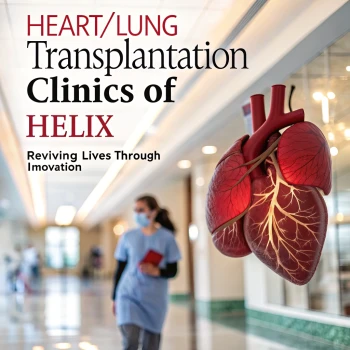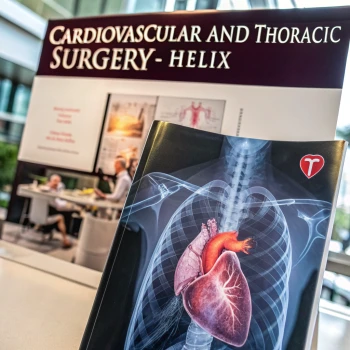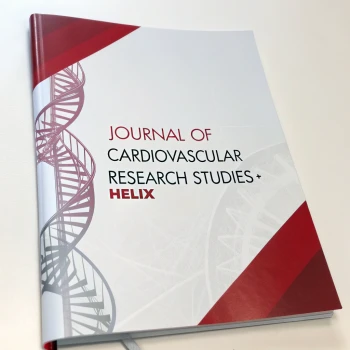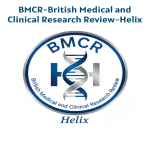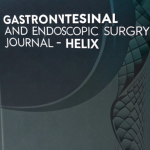Cardiovascular and Thoracic Surgery-Helix is a publication of Helix Health Science www.helixhealthscience.com contact@helixhealthscience.com
Advancements in Cardiovascular and Thoracic Surgery: A Comprehensive Overview
Introduction to Cardiovascular and Thoracic Surgery
Cardiovascular and thoracic surgery represents a crucial branch of modern medicine that focuses on the surgical treatment of diseases affecting the heart, lungs, and other structures located within the thoracic cavity. These specialized surgeries play a pivotal role in diagnosing and managing a wide range of conditions, thereby improving patient outcomes and enhancing overall quality of life. With the rising incidence of heart disease and lung disorders, the significance of cardiovascular and thoracic surgery has become increasingly pronounced.
Conditions treated by cardiovascular surgery primarily include coronary artery disease, congenital heart defects, valvular diseases, and arrhythmias. Surgeons in this field utilize various innovative techniques, including minimally invasive procedures, to restore normal function and alleviate symptoms. Such interventions not only address the immediate medical issues but also contribute to the long-term well-being of patients by reducing the risk of complications associated with untreated cardiovascular conditions.
Thoracic surgery, while closely related, specializes in diseases affecting the lungs, esophagus, and mediastinum. Common procedures in this domain include lobectomies for lung cancer, esophagectomies for esophageal diseases, and interventions for pleural diseases. Additionally, advancements in imaging technology and surgical methodologies have significantly enhanced the precision and safety of these procedures.
The intersection of cardiovascular and thoracic surgery underscores the comprehensive nature of treatment provided to patients. Physicians in these specialties work collaboratively to create personalized management plans that address both surgical and non-surgical aspects of care. By employing state-of-the-art techniques and leveraging advancements in surgical technology, cardiovascular and thoracic surgeons are achieving better surgical outcomes and fostering a better quality of life for their patients.
Innovations and Techniques in Surgical Procedures
In recent years, the field of cardiovascular and thoracic surgery has witnessed remarkable advancements, fundamentally transforming surgical procedures and improving patient outcomes. One of the most significant developments is the adoption of minimally invasive surgery. This technique reduces the size of incisions required and minimizes tissue damage, leading to quicker recovery times and less postoperative discomfort for patients. Additionally, the reduced trauma associated with these surgeries often results in decreased hospital stays, thus enhancing overall patient satisfaction.
Another noteworthy innovation in this field is robotic-assisted surgery. Employing state-of-the-art robotic systems allows surgeons to perform complex procedures with enhanced precision and control. Through the use of 3D visualization and intricate instrumentation, surgeons can navigate delicate anatomical structures with greater accuracy. This increased dexterity not only increases the likelihood of successful outcomes but also reduces the risk of complications associated with traditional open surgical approaches.
Moreover, advancements in imaging technology, such as intraoperative ultrasound and enhanced MRI techniques, have played a crucial role in preoperative and intraoperative planning. These technologies allow for detailed visualization of cardiovascular structures, helping surgeons make informed decisions while performing intricate procedures. The capability to visualize anatomical variations in real-time facilitates more tailored surgical strategies, significantly reducing the chances of complications and improving overall patient care.
Furthermore, the integration of innovative materials, like bioengineered grafts and stents, has transformed how surgeries are performed. These materials promote better integration and healing post-surgery, markedly decreasing the risks of graft rejection and infection. Overall, the confluence of these cutting-edge techniques and technologies culminates in a more effective and compassionate approach to cardiovascular and thoracic surgical interventions, ultimately reshaping the landscape of these specialized fields.
The Role of Interdisciplinary Collaboration in Patient Care
In the dynamic field of cardiovascular and thoracic surgery, the success of surgical interventions is not solely dependent on the technical proficiency of the surgeons. Instead, it is increasingly recognized that interdisciplinary collaboration plays a pivotal role in enhancing patient care. An integrated approach that includes surgeons, anesthesiologists, nurses, and rehabilitation specialists fosters an environment where comprehensive care plans are meticulously tailored to meet individual patient needs.
The surgical process begins long before the operating room, with preoperative assessments conducted by a diverse healthcare team. During this stage, anesthesiologists evaluate the patient’s medical history and present health status, collaborating with surgeons to determine the safest anesthesia plan. Nurses contribute by providing vital information regarding patient concerns and preferences. This collaboration ensures that every aspect is comprehensively addressed, thereby reducing preoperative anxiety and preparing the patient mentally and physically for surgery.
During the surgical procedure itself, effective communication between the surgical team members is essential. Surgeons rely on anesthesiologists to maintain a stable physiological state for the patient while being supported by surgical nurses who assist in various capacities, from instrument handling to patient monitoring. This synchronized teamwork enables the surgical team to respond swiftly to any unforeseen complications, ultimately enhancing surgical outcomes.
Postoperatively, the importance of collaborative care continues. Rehabilitation specialists play an integral role in creating tailored recovery plans that encompass both physical and emotional aspects of healing. Nurses, often the primary point of contact for patients, ensure that care standards are sustained and patient concerns are effectively communicated. This holistic approach not only addresses immediate recovery needs but also provides long-term support, significantly improving the overall quality of care for patients undergoing cardiovascular and thoracic procedures.
Future Trends and Research in Cardiovascular and Thoracic Surgery
The landscape of cardiovascular and thoracic surgery is undergoing a significant transformation driven by advancements in medical research, technology, and patient care strategies. One of the most promising trends on the horizon is the rise of personalized medicine, which tailors treatment plans to individual patient profiles. This approach enhances the effectiveness of surgical interventions by considering unique genetic and physiological characteristics, potentially leading to better patient outcomes and reduced complications.
Moreover, advancements in imaging technologies play a crucial role in shaping the future of cardiovascular and thoracic surgery. Innovations such as 3D imaging and intraoperative imaging modalities offer surgeons enhanced visualization during procedures, allowing for more precise interventions. These technologies facilitate real-time assessment of surgical sites, enabling improved decision-making and minimizing the risk of intraoperative errors.
Another area of growth is the exploration of stem cell therapies and regenerative medicine. Research is underway to understand how stem cells can promote healing and regeneration in cardiovascular tissues, which could revolutionize treatment for patients with degenerative heart conditions. The integration of such therapies into surgical practices holds the potential to enhance recovery times and improve long-term outcomes for patients.
Additionally, ongoing research efforts are focused on developing predictive models for surgical outcomes. Utilizing big data and machine learning algorithms, researchers aim to analyze historical patient data to identify risk factors and improve preoperative assessments. These predictive tools can help clinicians make informed decisions and facilitate better surgical planning, ultimately advancing the field of cardiovascular and thoracic surgery.
As the field continues to evolve, it is imperative to support research initiatives that target the underlying mechanisms of cardiovascular and thoracic diseases. By fostering collaboration among surgeons, researchers, and clinical practitioners, the future promises a more profound understanding of these complex conditions, paving the way for innovative surgical techniques and improved patient care standards.

